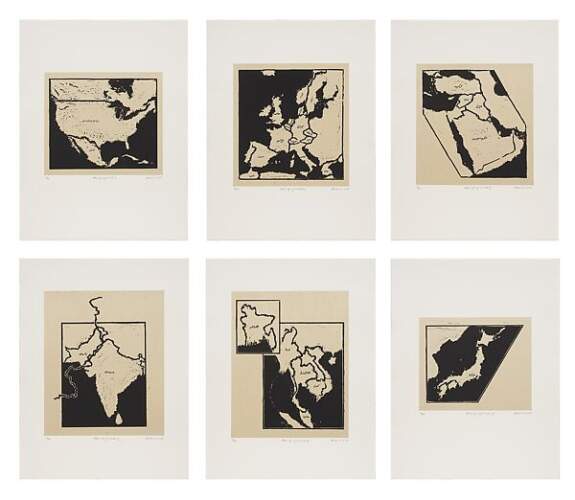Zarina Hashmi, also known as Zarina, was an Indian-American artist known for her minimalist prints and sculptures. Her work explores themes of displacement, memory, and identity, drawing from her personal experiences as a Muslim woman who lived in various countries throughout her life.
In this article, we will delve into the life and art of Zarina Hashmi, exploring her unique style and the impact she has had on the art world.
Early Life and Education
Zarina Hashmi was born in Aligarh, India in 1937. She grew up in a large Muslim household and was the youngest of ten siblings. Her father was a professor of history and her mother was a homemaker.
At the age of 20, Zarina moved to Paris to study at the École des Beaux-Arts. She then moved to London, where she studied printmaking at the Atelier 17 under the guidance of renowned printmaker Stanley William Hayter.
Influence of Indian Culture

Zarina’s Indian heritage played a significant role in her art. She was deeply influenced by the traditional Indian art of calligraphy and miniature paintings. She also drew inspiration from the architecture and maps of her hometown, Aligarh.
Her work often incorporates geometric patterns and lines, reminiscent of the intricate designs found in Indian textiles and architecture. She also used materials such as handmade paper and gold leaf, which are commonly used in Indian art.
Career and Success
After completing her studies in London, Zarina moved to New York City in 1976. She quickly gained recognition for her unique style and was included in several group exhibitions at prestigious galleries such as the Museum of Modern Art and the Whitney Museum of American Art.
In 1981, she had her first solo exhibition at the New York Print Center, which received critical acclaim. She continued to exhibit her work internationally, with shows in countries such as India, Japan, and Germany.
The Atlas of My World
One of Zarina’s most famous works is her series “The Atlas of My World”. This series consists of a collection of prints and sculptures that explore the idea of home and displacement.

The prints in this series feature maps of cities and countries that hold personal significance to Zarina, such as Aligarh, New York, and Venice. She also incorporated text and symbols into the maps, representing her memories and emotions associated with these places.
The sculptures in this series are made from wood and resemble houses or buildings. They are intricately carved with patterns and lines, representing the idea of home and the memories that are attached to it.
Impact on the Art World
Zarina Hashmi’s work has had a significant impact on the art world, particularly in the realm of printmaking. She is known for her mastery of the medium and her ability to create powerful and thought-provoking pieces using simple lines and shapes.
Her work has been praised for its ability to evoke a sense of nostalgia and longing, while also addressing important themes such as displacement and identity. She has been an inspiration to many artists, particularly those from South Asia, and her work continues to be exhibited and collected by museums and galleries around the world.
Recognition and Awards
In 2011, Zarina was awarded the prestigious Padma Shri, one of India’s highest civilian honors, for her contributions to the field of art. She was also the recipient of the Skowhegan Medal for Printmaking in 2013.
In 2017, the Guggenheim Museum in New York held a retrospective of her work, titled “Zarina: Dark Roads”. This exhibition showcased over 60 pieces from her career, including prints, sculptures, and installations.
Legacy and Influence
Zarina Hashmi passed away in 2020 at the age of 83, leaving behind a legacy that continues to inspire and influence artists around the world. Her work has been featured in numerous exhibitions posthumously, including a solo show at the Pulitzer Arts Foundation in St. Louis.
Her minimalist style and exploration of themes such as memory and displacement have paved the way for other artists to explore similar concepts in their work. She has also been a role model for women and artists of color, breaking barriers and gaining recognition in a predominantly male and Western-dominated art world.
Conclusion
Zarina Hashmi’s life and art are a testament to the power of personal experiences and cultural heritage in shaping one’s artistic expression. Her unique style and thought-provoking themes have made her a prominent figure in the art world, and her legacy continues to live on through her work.
Whether it is through her prints, sculptures, or installations, Zarina’s art invites viewers to reflect on their own experiences and memories, making her a truly influential and timeless artist.
For more information, visit: Tech Me Life
